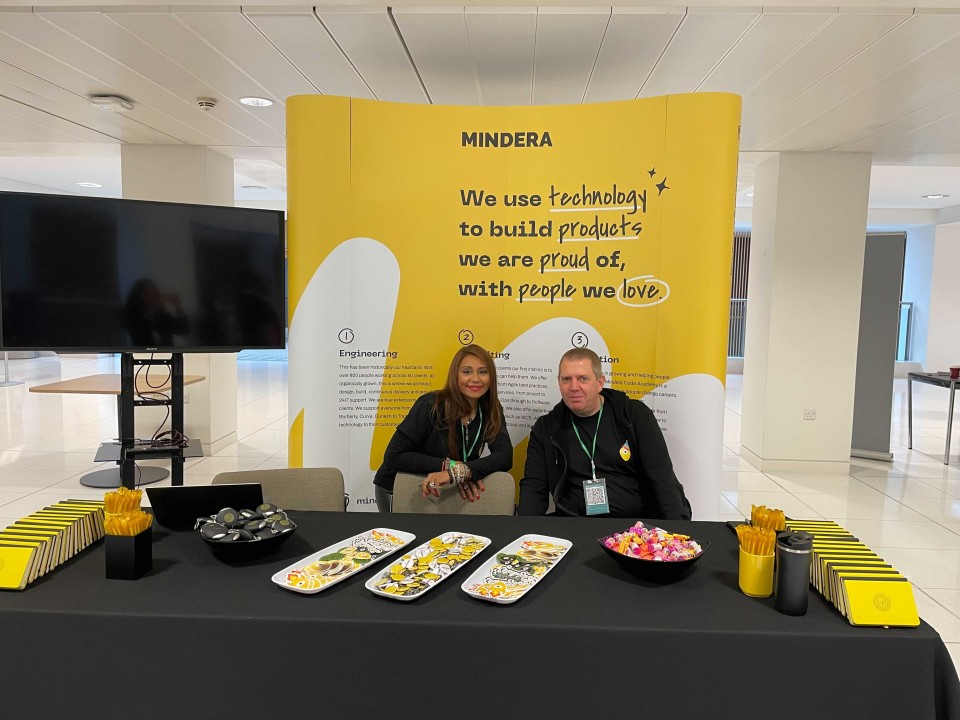
Last weekend I attended the DDD conference (Developer! Developer! Developer!) in Nottingham, going along with Mindera and helping to run our company stand. I can’t remember the last time I was at a conference and I’ve missed these sorts of events. The day as a whole was well-run, with food, clear covid protocols and some great talks. Plus, working on the stand gave me a chance to talk to lots of people.
There was a good range of talks, with some interesting clashes to choose between. My first one, Lex Lofthouse’s ‘Design for Developers’ was one of those talks where you emerge at the end feeling like an expert on the subject. The idea of design was broken down into four principles: hierarchy, proximity, contrast and balance, with examples of each.
Typography has always been a mystery to me, but Lex explained some simple principles before suggesting various supporting websites like fonts.google.com for typefaces and fontjoy.com and type-scale.com to work out how to use them. Similar resources are available for colour palettes such as coolors.co. It’s amazing to have these sort of online resources available, providing expert guidance for beginners. The talk also included discussions of using photos and illustrations, and quick introductions to grids and atomic designs.
The second talk was Stephen Haunts talking about social engineering techniques. It was both fascinating and terrifying, particularly around how sophisticated many of the techniques used by fraudsters were becoming, with IVR and sound effects being used to convince people they were being called by their bank.
After an excellent vegan lunch I attended a short talk on Open Banking vs Defi by Tom Morton, which discussed how the two compete, looking at blockchains as a sort of finance counter-culture. It was interesting to see how Open Banking has produced a wealth of personal finance managers, but very few new payments options, and Tom complained about the effects of the Visa/Mastercard duopoly – and indeed, there are recent examples of that market position being used to enforce the payment networks’ moral/political standards.
My final talk was Dylan Beattie on how there is no such thing as plain text. In an hour this went from the Cooke and Wheatstone telegraph (the earliest form of text encoding) through to unicode and emojis. The session was filled with both trivia and useful information. I leaned why Ctrl+C and Ctrl+D work as they do in terminals, and how the Danish Spelling Reform of 1948 changed the alphabetical ordering of identical words. Understanding how character sets are built up leads to some powerful insights, and Dylan described an impressive bug he’d solved around the appearance of weird characters. Another excellent talk on which to end the day.